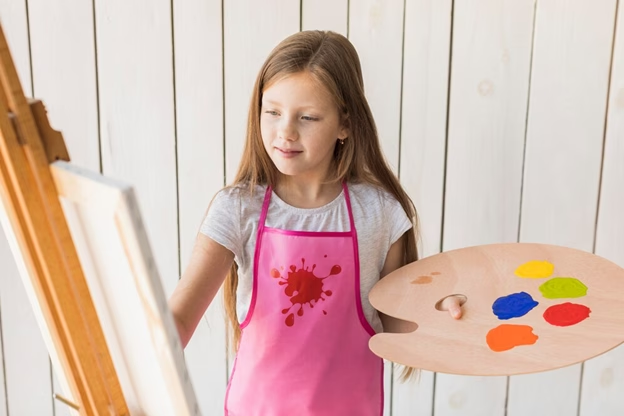
Guest post by Douglas Summers
Engaging children with special needs in the arts offers a profound opportunity for personal growth and self-expression. The arts provide a platform where children can explore their creativity, develop new skills, and gain confidence in their abilities. By integrating artistic activities into their daily lives, parents and educators can create an environment that celebrates individuality and encourages exploration.
Personalize Art Projects
Tailoring art projects to your child’s unique strengths and interests can significantly enhance their engagement. Whether they prefer the precision of pencils or the tactile experience of clay, focusing on activities that resonate with them creates a motivating environment. Encourage their creativity by providing open-ended prompts and unstructured time, allowing them to explore and experiment freely. Setting up a dedicated art space at home with accessible supplies can further support their artistic journey.
Incorporate Flexibility
Designing an art curriculum with flexibility gives children the chance to explore creativity in ways that resonate with their individual needs. Adaptive pacing lets them work at a comfortable speed, reducing frustration and encouraging deeper engagement with the process. Incorporating diverse learning modalities, such as tactile, visual, and auditory elements, makes artistic exploration accessible and exciting for different abilities. Offering choices in tools and materials helps kids express themselves authentically while fostering a sense of independence.
Preserve Their Art Digitally
Preserving your child’s artwork digitally is a fantastic way to celebrate their creativity. By converting their creations into digital formats like PDFs, you can create a lasting archive that is easy to share with family and friends. Using a free PDF converter, you can transform scanned images of their art into high-quality digital files. This not only saves physical space but also allows you to revisit their creative journey anytime, offering them a sense of accomplishment and connection.
Utilize Adaptive Art Tools
Adaptive art tools open doors for children with unique needs to express themselves freely and creatively. Specialized scissors, easy-grip brushes, and textured materials can make artistic activities more accessible and enjoyable. These tools are designed to accommodate a range of abilities, ensuring every child feels capable and included. Using adaptive equipment not only supports skill development but also builds confidence by reducing barriers to participation.
Try Collaborative Art Projects
Collaborative art projects can significantly boost your child’s teamwork and cooperative learning skills. By working together with peers on creative endeavors, they learn to communicate effectively and appreciate diverse perspectives. Projects like collaborative murals or stop motion animation offer inclusive environments where your child can thrive alongside others, transforming the learning experience into a rewarding journey.
Explore Drama
Storytelling and drama workshops provide a nurturing space for children with learning disabilities to explore and express their emotions. These activities enhance emotional understanding and foster empathy, promoting inclusivity and self-worth. Engaging in drama therapy can be a powerful tool in supporting emotional growth and autonomy, contributing to the holistic development of your child.
Participate in Art with Your Child
Participating in art activities with your child can be a powerful way to boost their creativity and confidence. By focusing on the creative process rather than the final product, you encourage them to explore their artistic abilities without fear of judgment. This approach nurtures their potential and fosters a growth mindset, essential for success in various life aspects. Exploring meaningful art projects that fit into your busy day can provide additional opportunities for engagement.
Artistic engagement offers a profound avenue for children with special needs to express themselves and grow. By integrating these strategies into their routine, you create a nurturing environment that celebrates their unique talents and encourages their artistic journey. The arts not only enhance creativity and confidence but also build connections and foster a sense of belonging, making it a rewarding experience for both you and your child.
